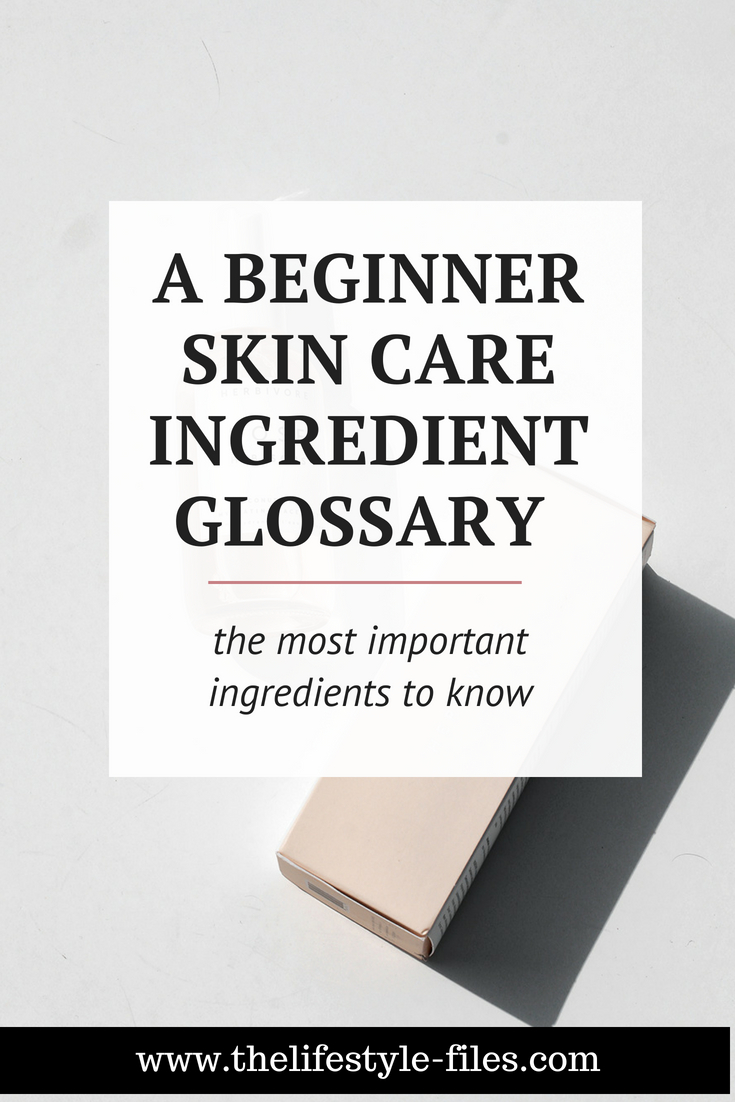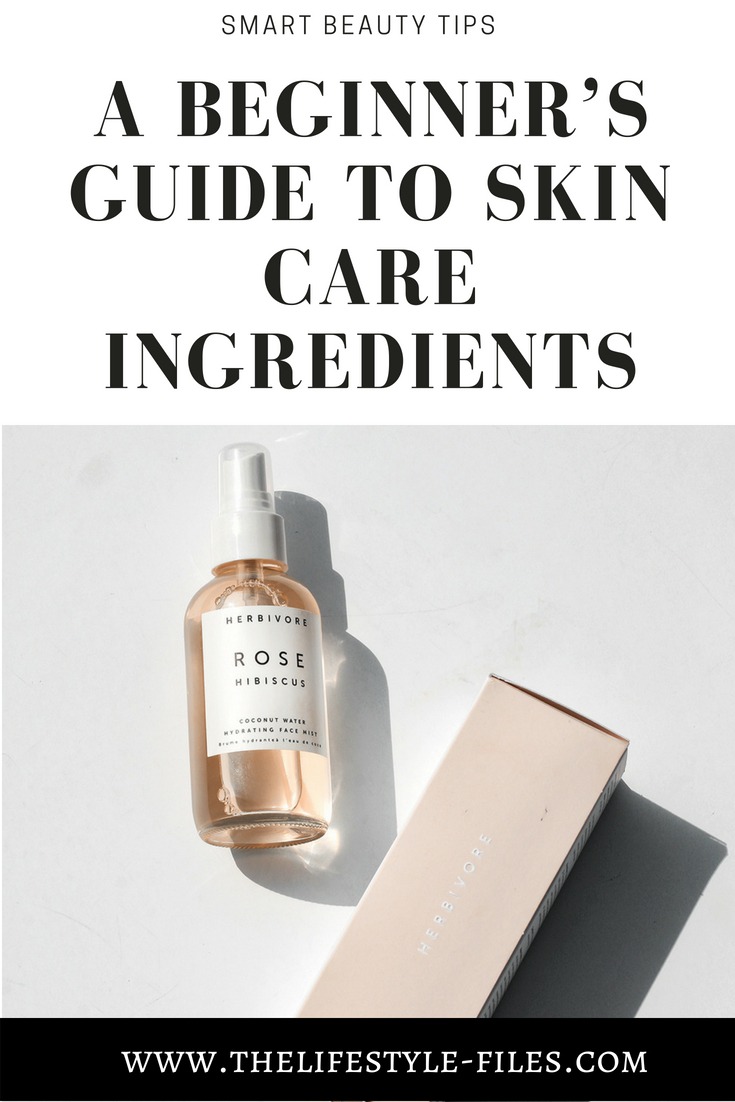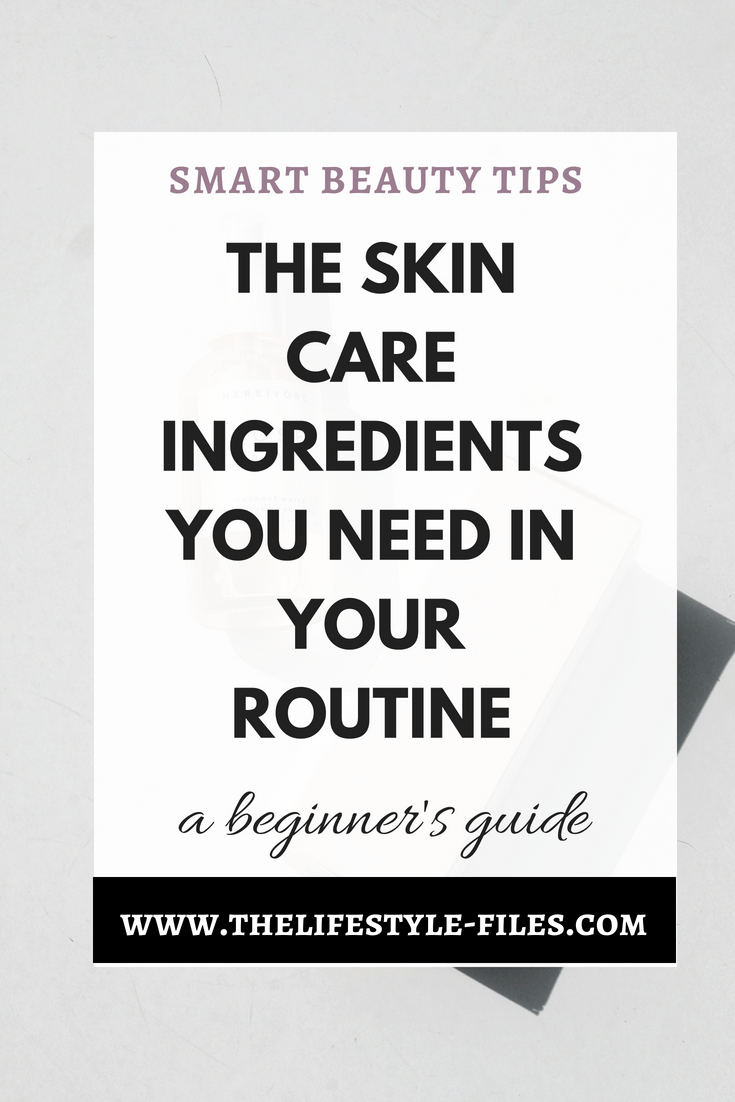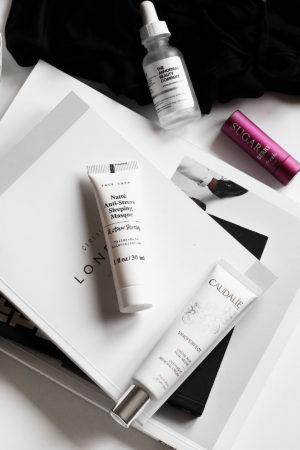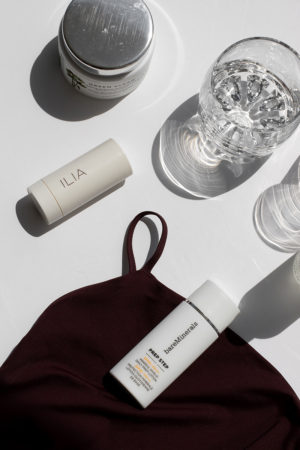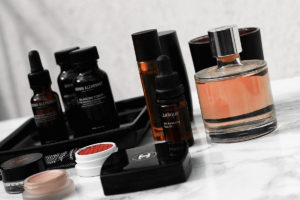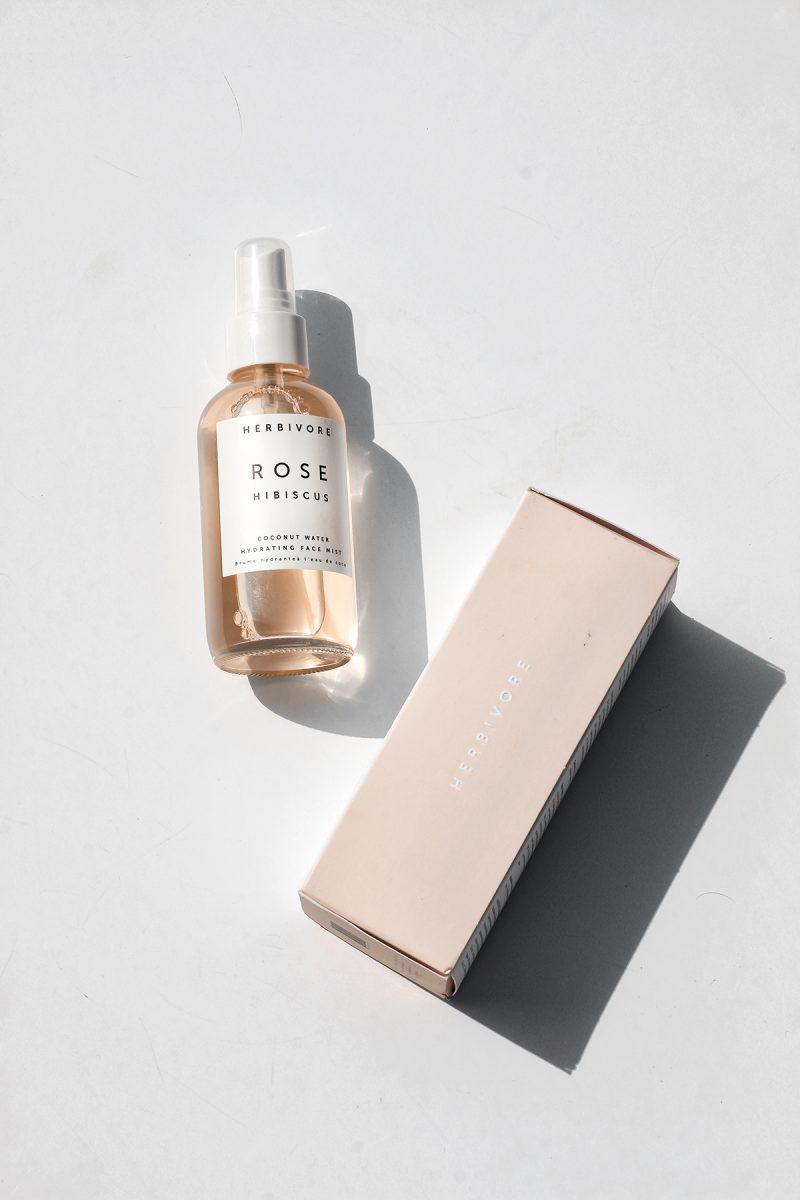 Last month, I shared my list of problematic beauty buzzwords. Those were the ones I always look out for as they make me a little bit wary of buying. But to know what not to buy is just the first step – it doesn’t give us the whole truth.
Last month, I shared my list of problematic beauty buzzwords. Those were the ones I always look out for as they make me a little bit wary of buying. But to know what not to buy is just the first step – it doesn’t give us the whole truth.
The beauty industry is a confusing one. Sometimes it seems only people with a medical degree or a biology PhD can make sense of beauty labels and ingredient lists. That’s a problem, of course – the less information we have, the more vulnerable we are, and that’s true for most consumer areas, not just cosmetics.
Knowledge IS power.
And even though I’m quite sure I’ll never be able to totally understand an ingredient label, over the years, with a lot of research, I’ve picked up some terms and words that have proven to be quite useful in deciding what to buy and what to avoid.
There are still enormous black and grey areas, but even a little information is better than none.
The below basic skincare glossary is a quite simple list – by no means exhaustive. But in my experience, it provides a good foundation to become just a little bit less lost when it comes to beauty products. These were the ingredients I first came to know and they are still some of my most important guidance when it comes to researching or narrowing down the endless options.
If you memorize these, you’ll have at least some understanding of what you should look for in products and whether there is some truth behind the beauty marketing claims.
Always read the ingredient list. It’s still not a 100% guarantee that you know what you get (or whether they will work for you), but it’s a good starting point and it’s a lot more honest than beauty marketing and those glossy ads.
To learn how to decode a beauty label and ingredient list, check out this post.
For a very detailed ingredient glossary check out one of these lists:
+ Glossary of popular skin care items
A basic skin care ingredients glossary
Moisturizing
There are many ingredients with moisturizing effects, but I primarily look for the ones below.
Hyaluronic acid
Despite what its name might suggest, hyaluronic acid is not an exfoliant, but a moisturizing ingredient. It’s a humectant, which means it attracts water molecules like a magnet and retains the moisture to hydrate the skin. Hyaluronic acid is especially effective as one HA molecule can bind up to 1000 times its weight in water.
It’s actually a naturally occurring substance in our skin, but its production slows down over time, and that’s one of the reasons our skin is gradually becoming rougher, less plump, and more dehydrated. If you find HA at the beginning of an ingredient list, that usually signs that the product has great moisturizing benefits.
Besides pure hyaluronic acid, you can also find sodium hyaluronate in products as an ingredient. It’s the salt form of HA, its molecules are smaller, which means better absorption. They are not the same, but both have great moisturizing benefits.
Glycerin
Another great natural humectant that attracts and traps moisture, thus making the skin smoother and more hydrated. It’s often combined with other hydrating ingredients, like essential oils, because it can strengthen their moisturizing benefits. It’s easily absorbed by the skin and glides on smoothly, and is also suitable for acne-prone skin. Can also appear on the label as glycerol or glycerine.
Plant-derived oils
Oils have many health and beauty benefits. Among others, they are great moisturizers due to the fatty acids they contain. If you have acne-prone skin, it’s best to stay away from heavier oils, like coconut oil for your face, but rosehip, calendula, or jojoba are great choices.
Squalane
Squalane is found naturally in the skin, but as it’s the case with Hyaluronic Acid, its production also decreases as we age. It’s an exceptional hydrator that also prevents moisture loss and protects the skin. It can usually be found in an oil form, but also sometimes as an added ingredient in serums and face creams. Note that it’s not the same thing as Squalene, though their structure is very similar, there are a few differences. Squalene is traditionally sourced from shark liver oil, while Squalane is botanical-sourced (mainly from olive trees). It’s also a more stable ingredient, therefore more suitable for cosmetic purposes.
Read more:
+ How Hyaluronic Acid benefits skin
+ What is hyaluronic acid and how does it work?
+ What is Glycerine and how effective is it in skincare?
+ Understanding moisturizer ingredients
+ Everything you need to know about skin care oils
+ Squalane: Skincare’s secret super ingredient?
Exfoliation
Exfoliation is an essential skincare step. It removes the dead cells from the top layer of the skin. It makes the skin more glowy and radiant and also helps the absorption of other important skin nourishing ingredients. Exfoliation can be mechanical (like a scrub or brush) or chemical (acids that look like toners and gently remove the dead cells by dissolving the bonds between them). The two main groups of acids are AHAs and BHAs.
AHAs
Alphy Hydroxy Acids are generally recommended for normal skin types, hyperpigmentation, uneven skin tone, sun damage, and fine lines.
The most common AHAs:
+ Glycolic Acid – can be made from natural sources (sugarcane) or synthetically. It has the smallest molecule size among the acids, which means it can penetrate the skin very well, but can also irritate it sometimes, so it’s best to start with a low % and gradually prepare your skin for more.
+ Lactic Acid – made from milk, recommended for sensitive skin and rosacea
+ Malic Acid – typically used as a supplement to glycolic or lactic acid
+ Mandelic acid – made from almonds, this is one AHA that’s actually recommended for acne-prone skin. It’s also less irritating than other acids but also takes a longer time to work.
A small tingling feeling is normal when using AHAs. Do not ever forget sunscreen when you use acids as AHAs make the skin very sensitive and vulnerable to sun damage.
BHAs
Beta Hydroxy Acids are mainly recommended for oily, combination, or acne-prone skin because they are oil-soluble (AHAs are water soluble), which means they can go deeper into the pores, cut through the oil that has clogged them, and thus remove excess sebum. They also have anti-inflammatory and anti-bacterial properties, which are great for acne and breakouts.
BHAs in cosmetic products almost always refer to salicylic acid.
Read more:
+ AHA vs. BHA: What’s the Difference?
+ Your complete guide on the Dos and Don’ts of mixing skin care acids
Anti-aging
Though the anti-aging claim is slapped on almost all beauty labels, in reality, there are only a handful ingredients that are proven to have any kind of anti-aging effects – which means they can somewhat slow down the inevitable process by increasing cell turnover and collagen production. These are:
Retinol
The natural form of Vitamin A, and the one ingredient most dermatologists agree has anti-aging effects. It reduces the appearance of wrinkles, improves texture, lightens age spots, and boosts the thickness and elasticity of the skin.
There are many different Vitamin A forms (like Retin-A, Tazorac, tretinoin) and each differs in effects so it’s best to consult a dermatologist before starting on a regimen.
Vitamin C
A powerful antioxidant that can brighten the skin, boost collagen, and help fade spots. The best form of Vitamin C is L-ascorbic acid or Ascorbic acid. Some of the other forms you can spot on the ingredient list: 3-0 Ethyl Ascorbic Acid, Magnesium Ascorbyl Phosphate, Ascorbyl Palmitate, Ascorbyl Tetra-Isopalmitate. Always do some research before shopping to find the best form for you. Vitamin C works really well Vitamin E and ferulic acid, so if you see all three of them on a label, it’s a good start.
Niacinamide
Niacinamide (or Vitamin B3) is very effective for sensitive, red, acne-prone skin, but research shows it can also brighten the complexion, erase wrinkles, improve elasticity, and fight inflammation.
Read more:
+ The truth about anti-aging without the marketing bullshit
+ A guide to vitamins in skin care
+ How does Vitamin C help skin?
Antioxidants
Antioxidants have an important role in fighting free radicals. Free radicals (when an atom or molecule is missing an electron) bounce from cell to cell basically trying to steal the missing electron from other atoms and destroy them. If they succeed, they can greatly damage the skin, interfere with normal DNA, destroy collagen, cause inflammation and discoloration, and can lead to premature aging, sagging skin, acne, inflammation, and wrinkles. Antioxidants basically work by neutralizing these free radicals and thus protecting the healthy cells and prevent premature aging.
Antioxidants work really well together, so choose products that feature several antioxidants. Serums are probably the best formulations for a powerful antioxidant punch.
Look for the following ingredients (antioxidants) in the packaging and ingredient list of skincare products:
+ Vitamin C
+ Vitamin E (Tocopherol)
+ Ferulic acid – best combined with Vitamin C and E
+ Green tea
+ Resveratrol
+ Grapeseed extract
+ Coenzyme Q10
+ Niacinamide
+ Lycopene
+ Caffeine
Read more:
+ City vs. Skin: Do we really need anti-pollution skincare?
+ The Truth About Antioxidants and Your Skin
Sunscreen
There are two kinds of active ingredients that help protect the skin from UV rays: physical (or mineral) and chemical. Physical ingredients block, reflect, absorb and scatter the sun’s rays. Chemical ingredients absorb UV rays and transform them to heat. These are the main ingredients you should look out for:
Physical (mineral) sunscreen ingredients
+ Titanium dioxide
+ Zinc oxide
Chemical sunscreen ingredients
+ Oxybenzone
+ Octinoxate (Ethylhexyl Methoxycinnamate)
+ Octisalate (Ethylhexyl Salicylate)
+ Octocrylene
+ Avobenzone (Butyl Methoxydibenzoylmethane)
+ Mexoryl SX and X
I always choose mineral sunscreen, because they work the best for me.
Read more:

